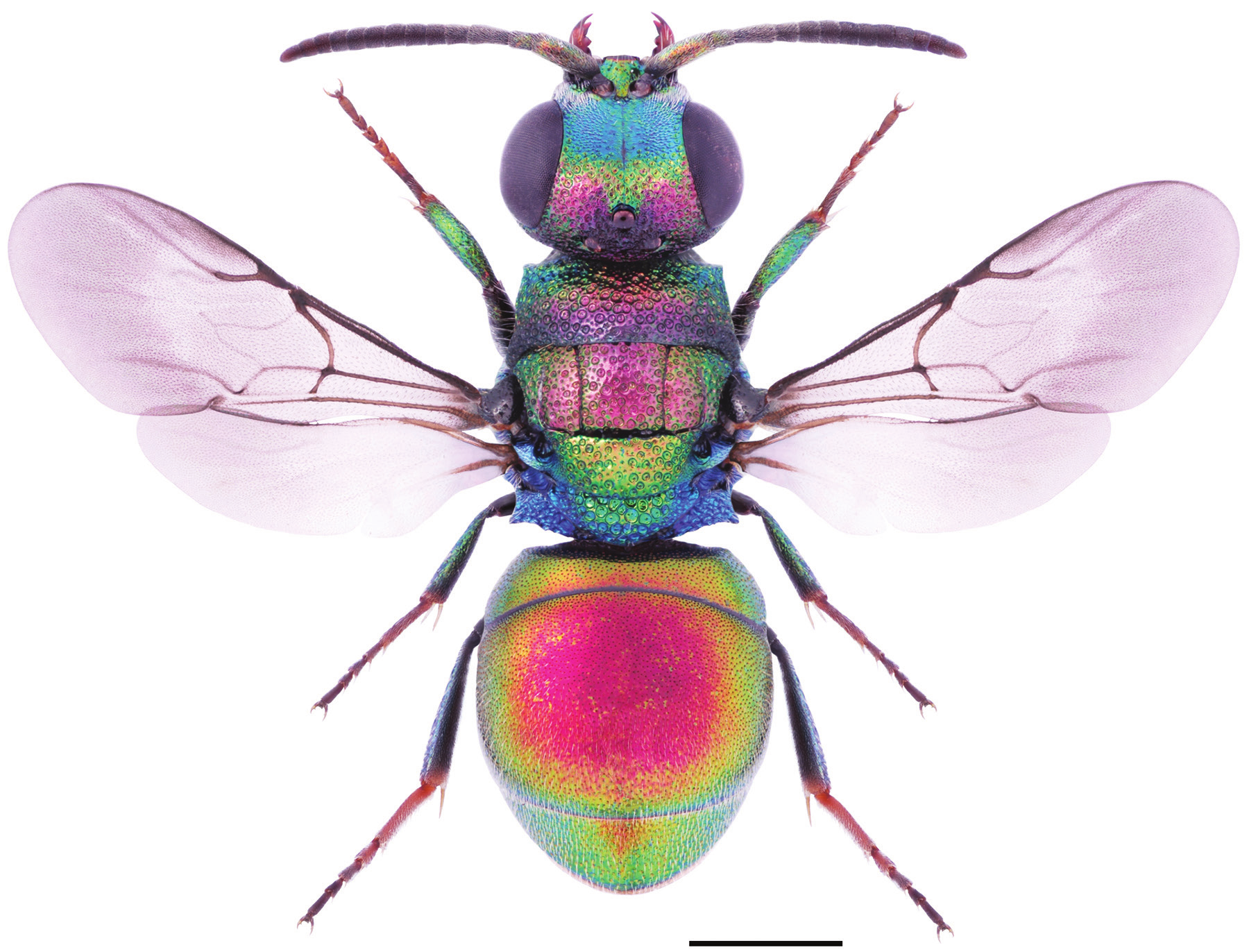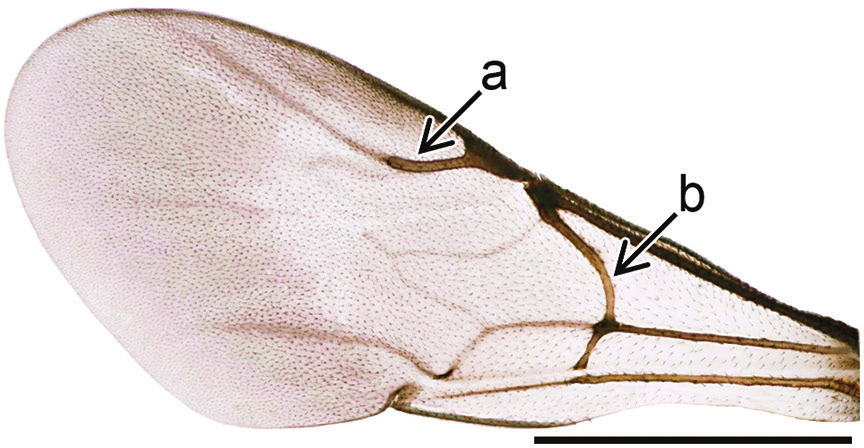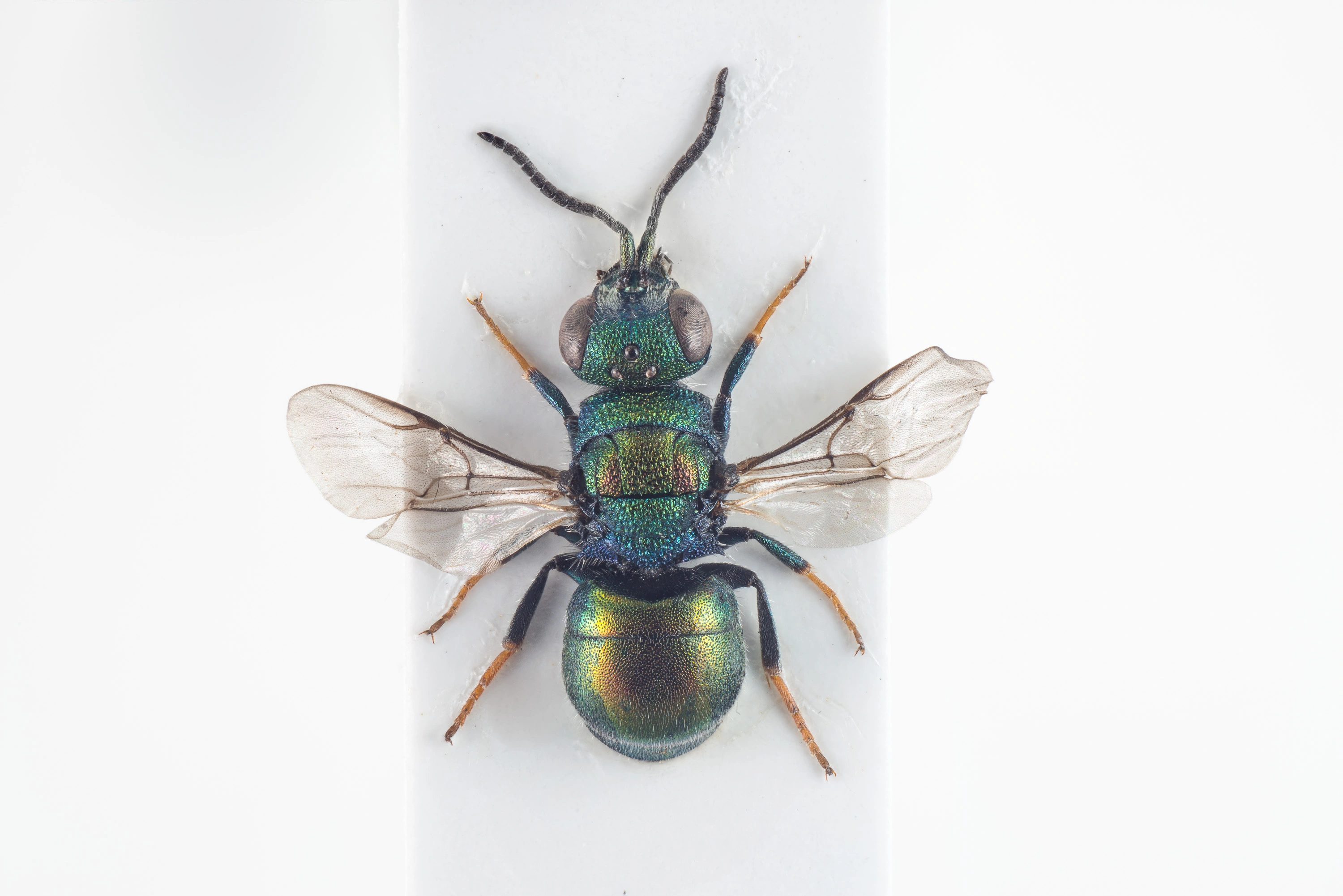Hedychridium ardens
Figure 66
Hedychridium ardens ♀. Scale 1 mm.
A relatively common species in different kind of sandy areas. The hosts are Crabronidae in the genera Oxybelus and Tachysphex. The species is relatively easy to recognize by the dense punctation, green colour and small size.
- Innhold
- Diagnosis
- Distribution
- Biology
Diagnosis
Figure 8
Forewing: Hedychridium ardens, a radial sector vein, b medial vein. Scale 1 mm.
Figure 67
Pronotum, mesoscutum and mesoscutellum, dorsal view: Hedychridium ardens ♀. Scale 1 mm.
Length 3–5 mm.
Both sexes have coppery red colour dorsally on the head, pronotum, mesoscutum, mesoscutellum and metasoma, whereas the frons, anterior corners of pronotum, metanotum, tibiae and apex of the metasoma are mainly greenish (Fig. 66). The propodeum and the mesopleuron are usually blue. The punctation of the mesoscutum (Fig. 67) is denser than in H. cupreum and H. purpurascens, but not as dense as in H. coriaceum. Small males are sometimes greenish all over with only weak coppery reflections dorsally, and can be confused with H. zelleri. The punctation of the mesoscutum is however sparser and coarser than in H. zelleri.
Distribution
Denmark, Estonia, Finland, Latvia, Lithuania, Norway, Sweden. Common.
Trans-Palearctic: Europe, Mongolia, Russian Far East (Kimsey and Bohart 1991, Linsenmaier 1997, Kurzenko and Lelej 2007).
Be aware that the records present in the GBIF map may be misleading for some countries due to unrevised data sets or missing information.
GBIF Taxon: Hedychridium ardens (Coquebert, 1801)Biology
Habitat: sparsely vegetated sandy areas, dunes, dry meadows. Adults visit flowers of Apiaceae, Asteraceae, Crassulaceae, Euphorbiaceae and Rosaceae (Molitor 1935, our own obs.).
Flight period: late May to late August.
Host: Diodontus tristis (Vander Linden), Oxybelus bipunctatus Olivier, Tachysphex nitidus (Spinola), T. obscuripennis (Schenck) and T. pompiliformis (Panzer) (Crabronidae) (Trautmann 1927, Berland and Bernard 1938, Benno 1950, Else 1973, Kofler 1975, Morgan 1984, van der Smissen 2001).



